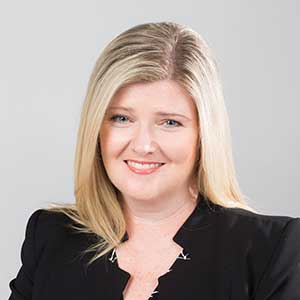O, sir! you are old;
Nature in you stands on the very verge
Of her confine: you should be rul’d and led
By some discretion that discerns your state
Better than you yourself.
Among its many lessons about vanity, envy, loyalty and the quality of love – the vulnerability that old age brings is writ large in King Lear, one of Shakespeare’s darkest plays. Trusting his children to care for him and slowly diving into madness when they don’t, the play ends with Lear’s lonely demise.

As we watch in darkened theatres, we all know it is a play, but according to UniSA Professor of Law Wendy Lacey, tragedies like those of Lear are played out every day in Australia. Older people are abused by their children, carers and friends – their assets taken, their dignity trampled, and their love and loyalty betrayed.
And if the rate of elder abuse in Australian society is disturbing, add in the fact that there are very few legal protections and safeguards in place, and their vulnerability becomes critical.
While collection of strong data on the incidence of elder abuse is hard to gather because of lack of reporting, the World Health Organisation estimates about one in six people (140 million people) aged over 60 years will be victims of elder abuse each year – from sexual abuse right through to neglect and financial abuse.
Australian data shows that between two and five per cent of Australians aged over 65 years have experienced abuse and that up to 80 per cent of perpetrators are family members, and about half of those are the children of their victims.
Prof Lacey still finds the figures devastating but the individual cases she has come across are even harder to reconcile.
For example, the 88-year-old Brisbane woman who died in hospital from a pulmonary thromboembolism due to complications from a fall. She broke her leg and had been left in her home to suffer the break for up to 12 weeks with no treatment and no support for toileting or bathing. When admitted to hospital she was filthy, malnourished and had untreated bedsores. She had been in the care of her daughter. “No one was charged over her death, which would suggest that there needs to be revision Australia-wide of the criminal laws that could be applied in such circumstances,” Prof Lacey says.
Recent ABC Four Corners reports have documented abuse of older people in care facilities. Calling on the government to improve standards and protections, it too reported that prosecutions and even sanctions for facilities that were not up to standard, were thin on the ground.
But with the number of older people accessing Commonwealth funded services only a small proportion of the number of Australians aged over 65 (in 2011, fewer than 240,000 people were in residential aged care), the problem is bigger than just nursing home standards.
As Prof Lacey points out, it is only through the regulation of pensions, aged care facilities and service registrations – specifically under the Aged Care Act 1997 and the Home and Community Care Act 1985 – that the Commonwealth can bring any pressure to bear on standards of care or the safety of older Australians.
Lack of a national framework means people ‘fall through the cracks’
Older people are vulnerable because there are no robust laws in place, at any level of government, specifically designed to safeguard their human rights and protect them.
“The Commonwealth does not have the constitutional ability to effect a comprehensive elder abuse prevention and response framework, other than through funding schemes that are largely administered by state and territory agencies for people living in care and accommodation facilities,” Prof Lacey says. “In the absence of a national framework, the states have attempted to coordinate approaches to elder abuse across agencies including police, public trustees, emergency services, legal services and advocacy bodies, but people are falling through the cracks.
“There is a Charter of Rights and Responsibilities for recipients of Commonwealth funded care and there is an obligation to report physical and or sexual abuse for residents in care facilities, however none of the comprehensive statements of rights are enforceable and are not accompanied by any scheme to seek individual remedies for their breach.
“With no international convention on the rights of older people or broad-based adult protection legislation in place, we don’t have the legal tools to properly protect vulnerable older people unless cases are so serious that they can be prosecuted under criminal law.”
Prof Lacey says it is vital that any reform comes within a human rights framework – steering clear of ageist or paternalistic approaches which can easily erode the rights and freedoms of vulnerable adults under the guise of protecting them.
“Yes, older people can suffer from conditions like Alzheimer’s or they can lose some of their other capacities as they age, but that doesn’t forfeit their right to respect and dignity,” she says.
And she has been working tirelessly to do something about it. Research to look at options for reform kicked off through UniSA’s Age Friendly World research theme, which includes teams of researchers from different academic disciplines and works in consultation with peak bodies such as the South Australian Public Advocate, the Office for the Ageing, the Legal Services Commission and the Equal Opportunity Commission.
The work began with the 2011 Closing the Gaps report, co-authored with the SA Office of the Public Advocate, to outline what a legal and policy framework to protect older people might look like. It was tabled in the SA Parliament that same year and became a reform priority.
A groundbreaking South Australian Charter of Rights and Freedoms of Older Persons, authored by Prof Lacey, was the first of its kind adopted in any Australian jurisdiction and a direct result of the State Government’s response to the research through its Strategy to Safeguard the Rights of Older South Australians 2014 – 2021.
On the national front, Prof Lacey worked as a member of the Expert Advisory Committee to the Australian Law Reform Commission to deliver Elder Abuse - A National Legal Response Report (ALRC Report 131), which includes 43 recommendations for law reform.
Prof Lacey is the first to say there is a long way to go. Working in the absence of an international convention on the rights of older people or an Australian bill of human rights, legal protections are harder and more complicated to establish – but she hasn’t given up.
In South Australia, the work she leads has seen the passing of new adult safeguarding legislation – an Australian first.
The legislation, aimed at protecting vulnerable South Australians, was passed by State Parliament in November.
At the second reading of the Bill, the South Australian Minister for Health and Wellbeing, Stephen Wade, thanked Prof Lacey for the work she had done in close collaboration with government to develop the legislation. He said: “Laws are often dubbed with names, this bill could well be called Wendy’s Law.”
Speaking of Age
“The limits of my language mean the limits of my world.” Ludwig Wittgenstein.
There have been warnings about Australia’s “grey tsunami” for years. The number of Australians aged 85 and over is projected to more than quadruple by 2050, from around 400,000 in 2010 to 1.8 million.
It’s a formidable statistic and an interesting choice of words to describe the increasing number of older Australians – a large, destructive, foreboding wave.
It’s an expression that hangs there amidst a whole host of word pictures of very old people – wrinkled, unattractive, selfish, senile, doddery, vulnerable, sick, out of touch, unfashionable, behind the times and burdensome.

According to UniSA linguist Dr Jonathon Crichton, language is not innocent in how our society treats people as they age.
“Language works like the dark matter of society, it is a huge pervasive force, yet we frequently miss how powerfully it impacts on how we think,” Dr Crichton says.
“As humans, it is our central tool for making sense of things – it is how each of us articulates and navigates our world.
“As soon as we begin to use words to categorise people, we have to understand that they are not simply categories – they have normative meaning because they tell us what we should expect of anyone in the category.
“Take the words ‘refugee’, ‘migrant’ and ‘illegal’ – they may all be used to identify the same person but imply specific and quite different values, motives and behaviour.Categories are never simply descriptive.”
Dr Crichton says history is full of examples of how language can act to disempower, disregard and discriminate.
“Increasingly we are hesitant about categorisations like old, elderly or aged, because we sense that differentiating people by where they are at in the chronology of their lives is problematic,” he says.
“Retirement age is shifting, people have a longer life expectancy and are more active for longer – so our language is having to catch up with reality and with changing social values and policy settings in this area.
“When categorisation erases our awareness of the granularity and richness of people’s experience and capacities, we have a problem – this is when language becomes stigmatising.
“Whether it is how we describe people as they get older, how we describe gender, or people’s mental health, we need to understand that language is a powerful force for good or ill.
“Indeed, part of any effort to enhance the lives of older people in Australia will include analysing and becoming aware of how we talk about ageing. With partners in the aged care sector, this is a focus of our research in the Research Centre for Languages and Cultures at UniSA.”